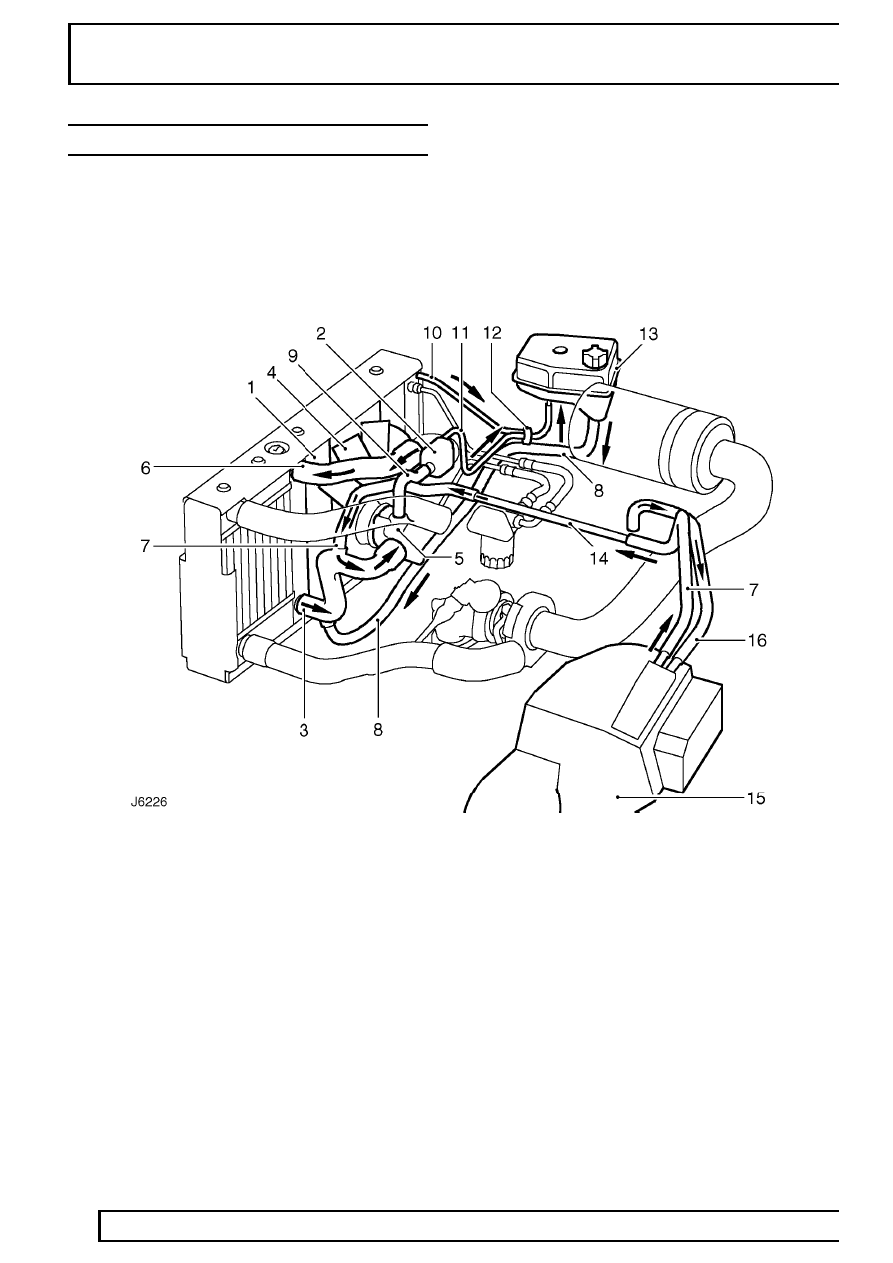Defender 300Tdi (1996+). Manual - part 30

26
COOLING SYSTEM
2
DESCRIPTION AND OPERATION
ENGINE (COOLANT) COOLING
Description
The 300Tdi engine uses a pressurised cooling system
and cross flow radiator which is supplied with coolant
from an expansion tank mounted on the RH side of
the engine compartment. A belt driven centrifugal
water pump, fitted to an auxiliary mounting assembly,
pumps coolant to the engine crankcase, cylinder head
and vehicle heater unit.
An eleven bladed fan, incorporating a viscous
coupling, is driven by an independent pulley secured
to the front cover plate. The thermostat housing,
bolted to the front of the cylinder head, is fitted with a
vent valve that purges excessive air pressure and
coolant back to the expansion tank.
Engine coolant circulation (engine warm - thermostat open).
1. Radiator
2. Thermostat/housing
3. Radiator bottom hose
4. Viscous fan
5. Water pump
6. Radiator top hose
7. Heater return hose
8. Coolant supply hose
9. By-pass hose
10. Radiator bleed (purge) hose
11. Thermostat housing bleed (purge) hose
12. ’Y’ piece ejector
13. Expansion tank
14. Heater rail
15. Heater unit
16. Heater feed hose